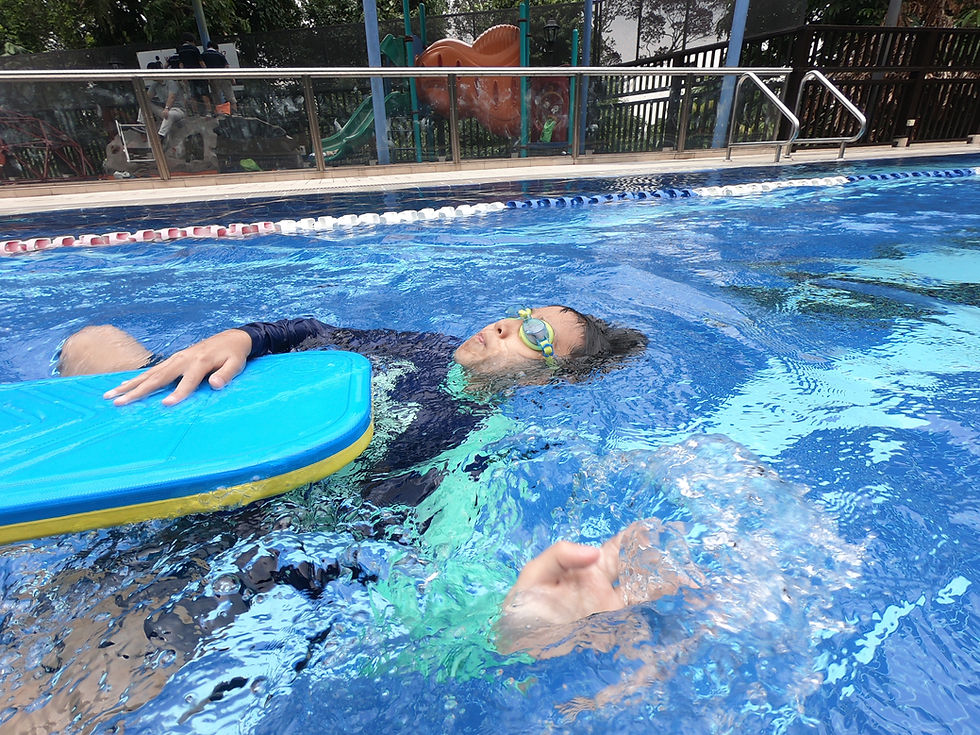The Importance of Body Position in Butterfly Technique
- SG Sink Or Swim

- Sep 8
- 3 min read

The butterfly stroke is often seen as one of the most challenging yet rewarding swimming techniques. Its powerful undulation and symmetrical movements demand strength, coordination, and rhythm. However, the foundation of an efficient butterfly stroke lies not just in power — but in body position. Without proper alignment, swimmers waste energy, lose speed, and struggle to maintain rhythm.
In this article, we’ll explore why body position is so critical in butterfly, common mistakes swimmers make, and drills to help improve alignment and efficiency.
🌊 Why Body Position Matters in Butterfly
Butterfly is unique because it requires a wave-like body movement, where the chest and hips rise and fall in a coordinated rhythm. Proper body position offers several benefits:
Reduces drag: A streamlined posture helps you glide through the water smoothly.
Improves efficiency: Balanced alignment conserves energy and maximizes forward momentum.
Supports rhythm: Correct body position allows seamless timing between the pull, kick, and breathing.
Boosts endurance: A relaxed, horizontal alignment minimizes fatigue during longer butterfly swims.
In short, body position is the glue that holds the technique together. Even strong kicks and pulls won’t be effective if your body is sinking or misaligned.
⚠️ Common Body Position Mistakes in Butterfly
Head too high during breathing
Lifting the head excessively disrupts the body’s streamline, causing hips and legs to sink.
Flat body with no undulation
Trying to keep the body rigid prevents the natural wave motion that drives the stroke.
Overarching the back
Some swimmers exaggerate the movement, leading to wasted energy and increased drag.
Late or early chest lift
Mistiming the body rise impacts arm recovery and kick coordination.
🏊 Drills to Improve Body Position in Butterfly
1. Body Dolphin Drill
Push off the wall and perform dolphin kicks with arms extended in a streamlined position.
Focus on generating movement from the chest and hips, not just the knees.
Purpose: Builds awareness of undulation and helps maintain horizontal alignment.
2. Single-Arm Butterfly Drill
Swim butterfly using one arm at a time while the other arm stays extended forward.
Breathe to the side, keeping your body flat and streamlined.
Purpose: Reduces complexity, allowing focus on body position and balance.
3. Kicking with a Snorkel
Use a front-mounted snorkel and practice dolphin kicks while maintaining a flat, relaxed body.
Purpose: Eliminates breathing disruptions and emphasizes proper head and hip alignment.
4. Chest Press Drill
Glide forward with arms extended, pressing your chest slightly downward to create the undulation.
Follow with a small upward movement of the hips.
Purpose: Teaches controlled body wave motion.
🎯 Tips for Perfecting Butterfly Body Position
Keep the head in line with the spine; look slightly forward and down.
Allow the chest to initiate the wave-like motion rather than forcing it from the legs.
Breathe quickly, with the chin skimming just above the water surface.
Relax between strokes — tension often leads to sinking hips and inefficient movement.
🏁 Conclusion
The butterfly stroke may look demanding, but mastering body position makes it significantly more efficient and enjoyable. By focusing on proper alignment, reducing drag, and embracing the natural undulation of the stroke, swimmers can glide through the water with greater ease and power.
With consistent practice and targeted drills, your butterfly can transform from a draining effort into a smooth, flowing stroke that feels both fast and sustainable.





Comments